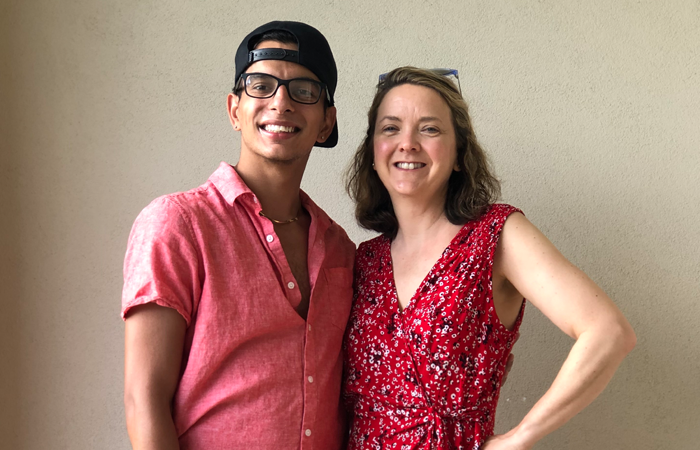Puberty — the period of development during which a child deals with budding hormones and the search for identity — can be a difficult experience for everyone in the family. Seemingly overnight, our charming, chatty children withdraw to their bedrooms, only to emerge as temperamental teenagers of few words. (Who is this child?) It sends shudders through even seasoned parents.
For adoptees, puberty can be especially challenging, as they sort through new feelings about their adoption. And several studies have found that some children, particularly girls who were adopted at an older age, are at risk for entering puberty too early. (If you notice any signs of early puberty in your daughter, medical intervention is critical to ensure that she won’t miss the teen growth spurt, which ends soon after menarche.) There are no predictors for the onset of puberty, as genetics plays a huge role in the timing of the hormonal surges. What can parents do?
Basics of Puberty in Girls and Boys
Girls typically start puberty between the ages of nine and 14, with an average start in the U.S. of 10-and-a-half years. The first physical sign of puberty in young girls is the appearance of breast buds. (The beginning stage of breast growth is often mistaken for fat deposits in the nipple area. True breast development starts with a firm glandular bud under the nipple, often appearing on one side before the other.)
Within a few months, pubic and underarm hair begins to grow. For some girls, however, hair appears before breast growth begins — an examination by a doctor can confirm that this is normal and connected to puberty. Two to four years after the beginning of breast growth, a girl’s menstrual periods begin. Girls enter a growth spurt soon after the onset of puberty. This tapers off and they grow only about two inches after starting their periods.
Puberty for boys usually begins with a growth spurt at about 10 to 17 years of age. The start is marked by enlargement of the testes, followed by pubic hair growth. Enlargement of the penis occurs six to 18 months later.
Special Factors for Adoptees
Parents of girls not yet approaching puberty should continue to take them to a doctor for yearly checkups. Girls should be watched a bit more closely between the ages of seven to 10 because of special factors with puberty and adoption.
Precocious puberty. Unusually early-onset puberty, known as “precocious puberty,” sometimes occurs in older girls whose growth was significantly delayed at the time of their adoption, and who subsequently “caught up” nutritionally and developmentally at a rapid pace. If you notice the signs of physical changes, as described above, in a girl younger than eight, seek a referral to a pediatric endocrinologist immediately. While no conclusive studies show problems with early-onset puberty in boys, parents should take the same precaution if they see signs of physical changes in their boys before age nine. Any child who shows signs of early puberty may require hormonal testing and intervention to ensure that puberty does not progress.
Delayed puberty. When is puberty too late? For girls, if there is no breast development by age 13 or menstrual period by age 15, a referral to a specialist is warranted. For boys, such a referral is needed by age 14 if significant growth of the testes has not taken place. The causes of delay in older adoptees — malnutrition or deprivation in an orphanage-care setting, for instance — are many, just as there are several causes of precocious puberty. For some, there may be a delay in overall development, with the growth spurt and puberty taking place at a later date. Consultation and appropriate testing can differentiate delays from conditions that need treatment.
Emotional Health is Important, Too
No matter when adolescents begin puberty, parents should be aware of the mental changes that are taking place. Watch for signs of poor self-image, and, if needed, seek help from a mental-health professional who is knowledgeable about adoption. (I refer patients to a therapist if I see preoccupation with body image that seems to lead to depressive, self-destructive behaviors.)
It’s not possible to prepare for every step in an adolescent’s transition to young adulthood. Working with your child’s doctor — and maintaining an open relationship with your child — will smooth some of the rough waters. Good luck!


